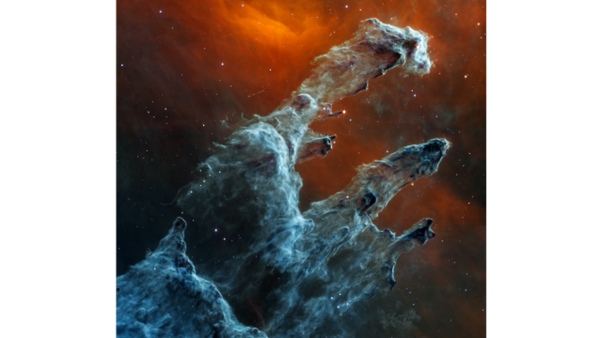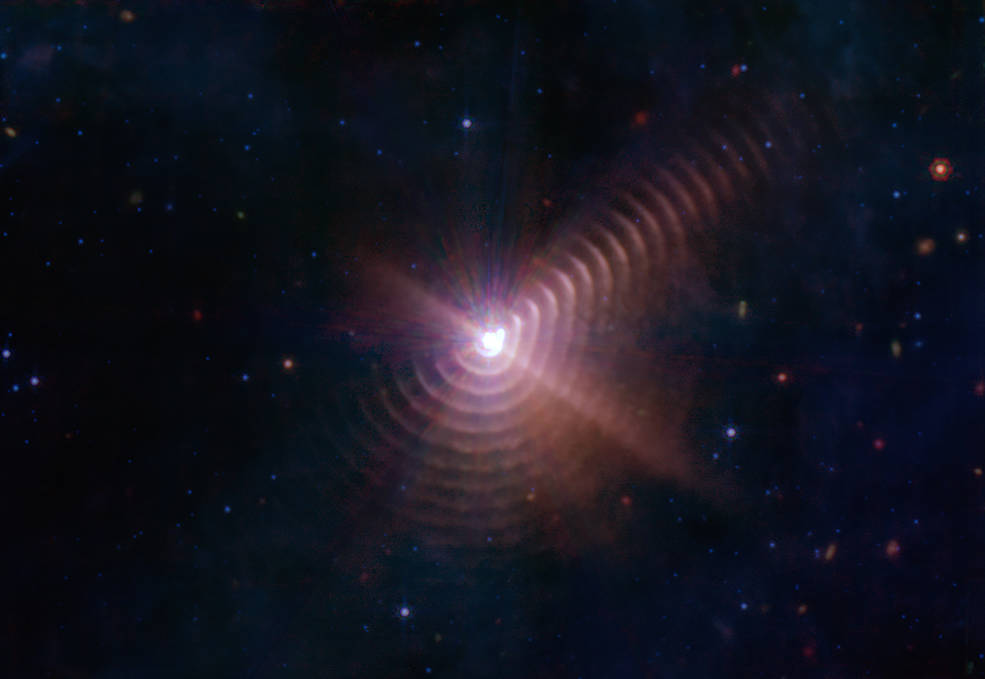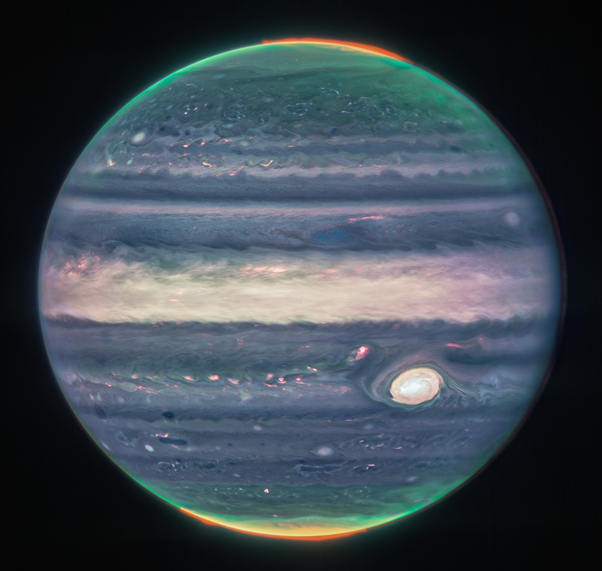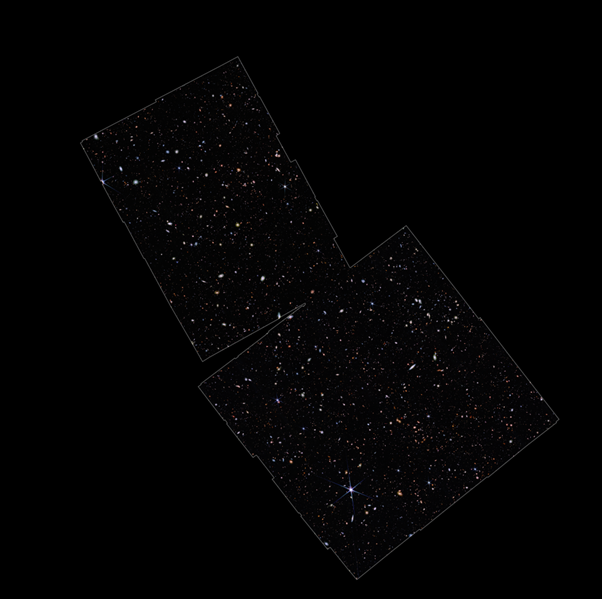Update on the James Webb Space Telescope
The heavens declare the glory of God; And the firmament shows His handiwork. ~ Psalm 19:1
The opening passage from the 19th psalm is one of the most awe-inspiring revelations from our creator. It makes the bold statement that just by peering up at the night sky, we can gain a glimpse of the awesome power and beauty of God. Of course, when these words were penned some 3,000 years ago in the time of King David, the heavens would have been painfully beautiful compared with the largely light-polluted skies we experience today. Anyone with eyes to see would have been transfixed by the Milky Way, the bright planets moving among the fixed stars, and the glories of the Moon.
The invention of the telescope greatly extended mankind’s gaze and unveiled a Universe of staggering size and complexity. Now NASA’s largest and most technologically sophisticated space observatory – the acclaimed James Webb Space Telescope (JWST) – is extending that legacy by beaming back images of God’s Universe that are quite simply breathtaking. This blog will take a look at some of the images made available to the public from JWST and what they reveal about our Universe.

JWST sees the Universe in infrared light, which is better able to penetrate dust clouds that conceal the view through telescopes imaging in ordinary visible light. Yet it is these dust clouds that mark the birthing cocoons of stars. The image above shows that dust is an essential component in the collapse of enormous clouds of gas, which become heated and compressed to such an extent that thermonuclear fusion reactions begin in their cores, causing their light to shine forth. The eerie black blobs near the summit of these pillars of gas and dust are so-called Bok globules, and they have been long theorized to represent the sites of new star formation.
Eventually the searing radiation from these neonatal suns will be strong enough to disperse the dust around them, allowing their light to be seen across the light years. There are many stars in this colossal structure, but since they do not emit much radiation at mid-infrared wavelengths, many of them remain invisible. The Eagle Nebula is located some 5900 light years from our solar system and covers an area of the sky roughly the apparent size of the full Moon as viewed with the naked eye ( about 0.5 angular degrees).

Wolf-Rayat (WR) stars represent some of the hottest and most luminous stars known. This star is actually part of a binary system, where both stellar components orbit their common center of gravity every 8 years. When they are closest to each other, their powerful stellar winds interact creating this magnificent cosmic fingerprint with shells of dust appearing with remarkable – almost clockwork-like – regularity. The shell furthest from the star is located about 70,000 times the distance from Earth to our Sun and is thought to be moving outwards at a mind-boggling 6 million miles per hour. Is our God not a great artist?

This stunning image, captured by JWST’s near infrared cameras, shows the interacting galaxies known as Stephan’s Quintet deep in the constellation of Pegasus. Stephan’s Quintet is faintly visible through a large backyard amateur telescope, but the giant infrared eye of JWST shows their never-before-seen vast, sweeping tendrils of gas, dust, and stars being drawn off as the five galaxies interact with each other gravitationally.
By studying the dynamics of these ultra-high-resolution images, cosmologists hope to refine their models on the distribution and nature of dark matter thought to make up some 27 percent of the mass of the Universe. Such interactions are the workhorses of galactic evolution. To capture the sense of scale, the image captures an area of the sky that is about one fifth the apparent size of the full Moon, and the galaxy cluster is located some 250 million light years from the earth.

Not only is JWST used to peer into the distant Universe, its amazing resolving power and unique infrared perspective enables it to observe never-before-seen images of our planetary neighbors. This image of Jupiter captured in late August 2022 reveals the stunning complexity of the Giant Planet’s upper atmosphere. Vast belts and zones straddle the planet from pole to pole. Its most famous structure – the Great Red Spot (GRS) – is seen at lower center right. The GRS is a vast storm system with wind speeds clocking 270 miles per hour that would easily fit the entire earth inside it! And it’s been around for several centuries because there is so little friction in Jupiter’s atmosphere to cause it to dissipate. By studying Jupiter’s turbulent atmosphere at infrared wavelengths, scientists hope to better understand meteorological events on this planet.

Mimicking the success of the Hubble Space Telescope (HST) Deep field Image of distant galaxies, this JWST near infrared image of a tiny region of sky very close to where HST pointed its mirrors shows the furthest and faintest galaxies ever seen. Close inspection of these images reveals about 100,000 galaxies dating to just 300 million years after the Big Bang (13.5 billion light years away) when the Universe was only 2 percent of its present age. What surprised astronomers is how big and well developed these neonatal galaxies are, and it has caused them to refine their models of how galaxies and stars formed shortly after the cosmic creation event. By analysing the light from these faint galaxies, cosmologists hope to get even more accurate measurements of the so-called Hubble Constant, and hence, the age of the Universe.
These represent just a small sample of the cutting-edge science now being conducted by NASA’s great infrared eye on the sky. You can explore many more images by visiting JWST’s official online gallery.
I wonder what King David would have made of these images? How many more psalms might he have penned to glorify God?
Neil Englishis that author of eight books on amateur and professional astronomy. His latest book is Choosing & Using Binoculars, a Guide for Stargazers, Birders and Outdoor Enthusiasts (Springer Publishing, 2023).
• Get SALVO blog posts in your inbox! Copyright © 2025 Salvo | www.salvomag.com https://salvomag.com/post/painfully-beautiful



















